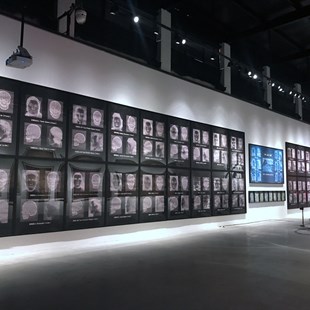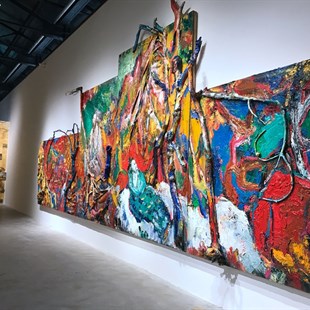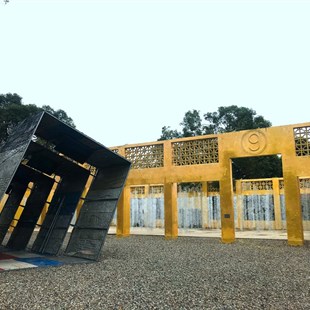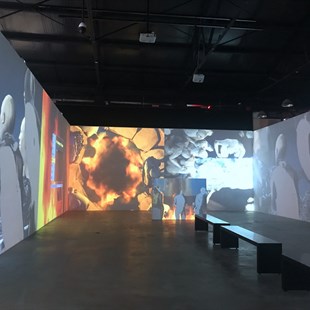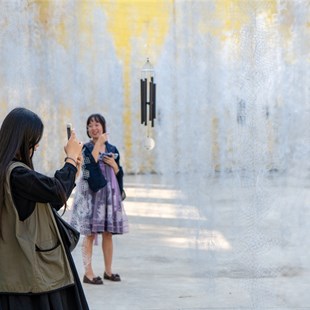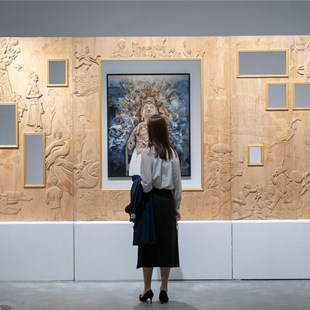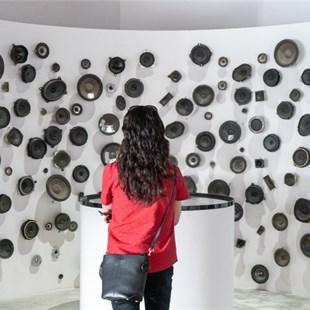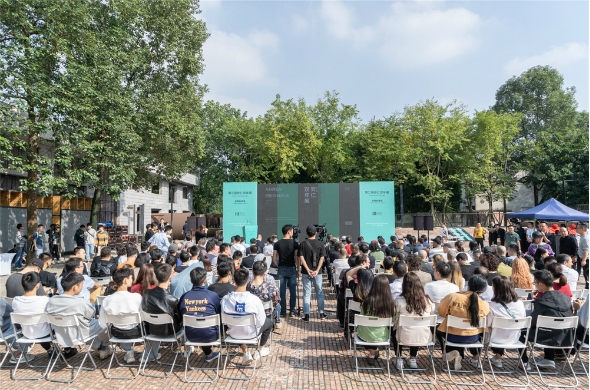
“‘Globalization’ hangs on everyone’s lips.” Zygmunt Bauman’s Globalization: The Human Consequences starts with this sentence. For everyone, ‘globalization’ is the unavoidable fate of the world, an irreversible process. It cannot be denied that “globalization” has affected everything around us unprecedentedly. There is no period like this diverse and complex one. Perhaps in the next second, the pattern of the world will be tilted and changed because of an inconspicuous event, and it is precisely because of its undulating and unpredictable possibilities.
“Globalization” has always been the state of IN and ing. On the other hand, how to maintain vitality with the squeeze of modern civilization and consumption supremacy always being a topic of concern. It is nothing new to reinvigorate the traditional cultural aggregates represented by the ancient towns and to promote the strategic measures of “culture + tourism + urbanization”. China has many “ancient towns”, but how to make its own characteristics from regional culture work is the most difficult issue. It is suspected that it is over-commercial, causing resentment for the overdevelopment led by the government with the support of capital and residents.
Therefore, such ancient residential buildings, which are most popular with contemporary society, also seem to be “greasy” in the increasingly saturated and highly similar models. But how to return to the simple, native state that turns into an expectation. How does contemporary art bridge the two states? How to weave together the globalization and the long-standing regional nature of ancient towns to compose a “a confrontation of ideals”?
Relational Logic: The Keynote to Create “Ideals”
Anren, an ancient town in the southwest of China that is not far from Chengdu, has once again attracted a hot discussion. The theme of the second Anren Biennale is “A CONFRONTATION OF IDEALS” — behind harmonious and beautiful “ideals”, are full of paradoxes, disputes and conflicts.
Generally speaking, the big relationship of the Anren Biennale revolves around the intertwining of the two clues of “globalization” and “regionality”. They construct the basic features of this biennale: First, based on the current perspective, the theme of “globalization” and related issues, from the perspective of art and culture which elaborate, interpret and reflect on its multi-features, concerning relevant artists as much as possible, and explore the construction of “human civilization and community”; second, it once again guides the attempt towards a new model of the ancient town. In the inheritance of the “past”, art is used to activate the law of the city to enhance the regional characteristics, aiming to create a dialogue between the ancient and modern continuing a spirit while creating a fresh business.
Responding to Globalization: Then what can artists do?
The Second Anren Biennale invited a total of 66 Chinese and foreign artists. Compared with the First Anren Biennale with 189 artists who had more than 800 works, the number of the artists has decreased to one-third, and the curatorial model is also now a general policy. The exhibitor led four groups, a total of eight curators which were reduced to a team of three joint curators: art historian Lu(Lyu) Peng, He Guiyan, Professor from Sichuan Fine Arts Institute and Dutch curator Siebe Tettero.This offers a message, at the same venue, artists have more adequate space to present, in terms of the audience experience, they are provided with more space for thinking, rather than dazzling the audience when they pass by. The carnival-style feast enlightens the popularity and rejuvenation, but the refined story, often stimulates a deep and pure artistic experience.
Returning to the content of works themselves, “a confrontation of ideals” concentrates on various forms such as painting, photography, installation, video, sculpture, film, literature and architecture. The number of subjects and the variety of topics involved are difficult to summarize. The focus of the artists still return to the “people, things, objects”: specific or abstract issues such as social identity, immigration issues, urbanization, living environment, migration, trade exchanges, medical ecology, information technology, beliefs, etc., or they take historical events that occur in reality as the entry point, or reflect the phenomenon with an overall appearance.
One of the topics that has been mentioned many times in the exhibition is the “map”, and even the entrance begins with such thematic works. Curator Lu(Lyu) Peng mentioned, “Sixty-one years after the last treasure ship of Zheng He set sail, in 1492, the German mariner Martin Behaim collaborated with a painter to produce the world’s first globe, which he named the Erdapfel, a German word meaning “the apple of the Earth”. The globe comprised two hemispheres fashioned from linen, the periphery was reinforced with wood, and the cooperative artist hand-painted the maps that covered it.”
Qiu Zhijie’s two large-scale world map projects record the mode of thinking and research. Qiu Anxiong’s “Invisible City—City on the Map” is a form of sacred ink painting, which is composed of fictional city maps and exotic animals. Zhang Zhaoying, Shen Muyang and Yao Yao jointly present “Oriental Tricks” which was based on the old map of the Ming Dynasty in 1602, which simulates the nautical knowledge and builds novel visual effects while expanding the boundaries of imagination; Sandow Birk in collaboration with Elyse Pignolet present “A Conservative World Map” and “An Open World Map” creatively exploring the difference between political “conservative and liberalism” with art visualization. Hong Hao’s “New World Map” prints reconstruct the world version under the cognitive boundary; Li Changlong’s “Ownerless Land” reconstructs the world map, with a vague boundary which is a metaphor for the constant evolution of conflict…
Through detailed analysis, whether it is the oldest Sumerian map, the beautiful Ptolemy map, the Qin Dynasty wooden map unearthed in Chinese tombs, the paper map fragments in the Han Tomb, maps are evidences of human existence, which also testify to the rise and fall of history, the formation of religion, the birth of science, and the evidence of conquest of the new territory. Therefore, this complicated and changeable model is more than just a picture. It is an illustrated documentary of recording, construction, and writing. It is an excellent medium for telling stories, and it also sets off human exploration of the unknown as well as ambitions in exploration and conquest. Based on the reality or virtual maps, artists reconstruct, paint, and recreate the artistic imagination from the most basic elements of the global concept.
A “human” measures himself and it is indispensable to explore the topics of human beings, which involve a wide range issues, such as race, identity, gender, family, life and death, humans and non-humans. Wang Guangyi’s “On ‘Popular Anthropological Studies’”, in the name of art, pseudo-scientific methods, prompts and unfolds the ambiguity contained in this issue, such as ethnicity, race, violence, aesthetics, etc.; “With the history of overseas workers returning home, a variety of media combinations have re-emerged the connection between ‘bone house’ and ‘homecoming’ to explore the concept of returning home; Cuban-American artist Coco Fusco in “Iron Man in the 21st Century”, borrowed the fairy tale characters of “The Wizard of OZ” to simulate “American Idol” to comment on the political environment of his motherland; Zhou Qinghui’s photographic video “Man’s Manor” is used to refer to modern people through animal cages, which creates a different visual experience with absurd and awkward time and space arrangements.
Moreover, events constitute an important node in human memory and even suddenly change the situation of the world. The focus of the works by the Turkish artist Erkan Ozgen and the American artist Dylan Mila focuses on the legacy of wars. Ozgen’s fascinating recording of the Syrian war atrocities told by a deaf-mute boy shows us the true experience of a witness, while Mila’s work explores the long-term effects of North Korea’s and South Korea’s ideological confrontation; Based on the strict security inspection of the airport after the 9/11 attacks, through the calculation and presentation of modern technology, Miao Xiaochun’s “Safety” reflects the issues related to human flesh and blood, security and a clash of civilizations.
The era of urbanization, trade, economy, and digital era are difficult to circumvent with issues of globalization. The methods of collecting finished products, collecting waste material, stacking, and combining are the expressive principles that artists are keen on. Yang Qian’s “Incision”, “Ladder”, Tan Xun’s“Color Plate—70 Degrees”, and Jiao Xingtao’s “Cube Game” use scrap building materials and statues to discuss the problems of survival, belief, reality, and civil symbols; Two artists born in 1990s including Tong Kunniao and Yuan Song use life waste, consumables, etc., to create a variety of installations respectively entitled “Half Hybrid Civilization Group” and “Landscape”; Liu Jianhua presents “Yiwu Investigation” with the small commodity flow spewed out of the container, intuitively stimulates the audience’s attention; Dutch artist Kadir van Lohuizen’s “The Waste Land” and Chris Jordan’s “Copy” show the horror of waste and marine plastic in an image; Xu Yibo’s “Transparent Society” explores the overlapping state of the digital age with multimedia installations.
The contradictions caused by the consumption era in the complex society, and the doubts and interpretations of cultural symbols provide an opportunity for artists to observe, interpret, reconstruct and create. In our interview, co-curator He Guiyan briefly introduced several types of Chinese artists: “those who explore globalization issues earlier, such as Xu Bing; who has an overseas background, having an intuitive experience of cultural differences, such as He Gong and Wu Daxin; starting with specific problems in China, such as Liu Jianhua and Jin Jiangbo; there are also young artists and so on.” Foreign curator Siebe Tettero is more focused on the interpretation of theme, “The issue of urgency and universality on a global scale is worthy of attention. I personally focus on issues such as conflict, gender, ecology, etc. How people live with increasingly diverse concepts and relationships are extremely complex. It is a question we think about.”
Beyond the “Ideals”, Can the ancient town be transformed?
In addition to the discussion of globalization, geography has become the most specific feature of this Anren Biennale. He Guiyan, a joint curator, talked about the characteristics of Anren in an interview with CAFA ART INFO, “it has gathered Chinese traditional culture, western Sichuan characteristics, and more importantly, it has made advancements in the Republic of China. The influence of Western culture is very obvious. It is a region where China and the West are integrated. How to bridge the theme between the exhibition and the historical context is the direction of our efforts.”
This kind of converging feature also attracted the attention of the artists. How to work with the wooden carvings of a Catholic theme sought by Anren Antiques Store, and with the exquisite carved bed, to build a small stage for “Dream History—Misreading and Shaping”, discussed the acceptance relationship between the local civilization and world civilization; “Golden House” is a work retained from the first Anren Biennale, the architect Liu Jiakun led the team to intervene in the original auto parts factory, and the workshop ruins were converted into golden sculptures. In the building, the division was joined by the white “Breeze” installation by Shi Jindian and He Duoling to create a phantom shuttle experience. Similarly, Song Zhen used the micro-powered installation “Anren·New Moon” to activate the romantic atmosphere of the ancient town; Wang Du’s “Swipe Screen” from the traces of the navigation map of Liu’s Manor in the ancient town to discuss the speed and dimension of the “swipe screen” of a contemporary lifestyle. The town has a fresh vitality because of the participation of the artists.
Lu (Lyu) Peng, one of the co-curators, stressed in an interview that “the function of the Biennale is what it can bring to a city, what it brings to the people living on this land, what to show to people who come here. The most intuitive is the increase in population flow, and the slow change in fermentation is the change in overall temperament. Therefore, we do not just emphasize what the curatorial team wants to do, but what the curatorial team can bring to Anren.”
Anren is known as the “Chinese Museum Town” and has a special historical and cultural resource. It has witnessed the modern history of western Sichuan. It has preserved 27 old mansions in the Ming and Qing Dynasties, 35 modern museums, and collection of works of the “Rental Collection Courtyard”, the Jianchuan Museum, as well as Liu Wencai’s former residence, Liu Shi Manor Group, etc., have created the “Western Sichuan Architectural Culture Boutique”. In addition, the strategic orientation and economic support of the OCT Group have strengthened the development ideas and added basic guarantees. Through artistic activities, artists around the world use their works to express their thoughts on how to respect the historical traditions of different civilizations and how to create a new community of human cultures: artists, curatorial teams, and professional groups that work together to consolidate the new development of this ancient town.
More importantly, as mentioned above, the “relationship” logic is the foundation of ideals: ancient and modern, Chinese and foreign, culture, society, politics, economy, internationalization, localization, modernization, original ecology, senior art, young artists…including the continuation of the two biennales, from the first “historical dialogue” to “geographic dialogue”; the modern cultural resident Anren ancient town, the “cultural dialogue” of the aborigines; and the capital of the OCT Western Group and the upstream and downstream enterprises of the industrial chain “Development Dialogue”; public art is involved in new urbanization construction, cultural tourism integration, tourism landmark brand construction, capital operations, international community construction, etc.; the process itself is an important event in the history of Chinese contemporary art history and new urbanization development. As a composite case, “Anren sample” is worthy of observation, reference, analysis and reference by society and the industry.
If you only interpret it from an art biennale, there may be flaws and one-sidedness. The Biennale is only an introduction. You may wish to bring your eyes back to the essence of discourse. The “confrontation of ideals” is implicit in complex relationships, weaving multiple clues, geographical links to the world, ancient and modern times throughout China and the West, rather than simply as an exhibition, it is better to be presented as a concentrated phenomenon that combines different elements which is not an easy task, perhaps it is a repeated collision, communication, tolerance, and win-win that makes it possible to be rich in diverse interpretations. Mysterious in passwords, and with mythological charm, is not precisely because of its diversity, complexity, vividness, can it always affect people’s curiosity? It is reported that the exhibition will remain on view until February 12, 2020.
Text by Zhang Yizhi, translated and edited by Sue/CAFA ART INFO
Photo Courtesy of the Organizer (Except those ?? CAFA ART INFO)



